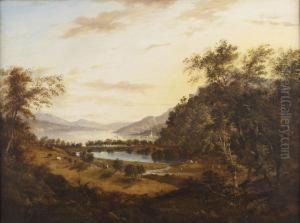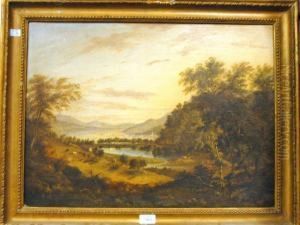Elizabeth Wemyss Nasmyth Paintings
Elizabeth Wemyss Nasmyth was a Scottish painter born in 1789 into a family deeply entrenched in the arts. She was one of the daughters of the renowned Scottish landscape painter Alexander Nasmyth, who was a prominent figure in the Edinburgh art scene and known as the 'father of Scottish landscape painting'. Elizabeth, along with her siblings, was trained by their father in the arts from a young age, and this education set the foundation for her career as an artist.
Elizabeth was part of a large family, and many of her siblings also became artists. This environment provided a rich ground for her development as a painter. She specialized in landscape painting, following in her father's footsteps, but also possessed her own unique style. Her work was characterized by its delicate touch and attention to the subtleties of light and shade, revealing her sensitivity to the nuances of the natural world.
Despite her considerable talent, Elizabeth Wemyss Nasmyth did not achieve the same level of fame as some of her male contemporaries or as her father, which was unfortunately common for women artists at the time. The Victorian era, in which she lived most of her life, was marked by restrictive societal norms that often limited women's opportunities for professional recognition and career development in the arts.
Elizabeth's life as an artist was also shaped by the broader historical context of Scotland during her lifetime. The country was undergoing significant changes, including the Scottish Enlightenment and the subsequent waves of Romanticism, which influenced its cultural and artistic landscape.
She lived through an era that saw a growing appreciation for the natural beauty of the Scottish landscape, which was reflected in her works. Her paintings were part of the movement that helped to establish a distinct Scottish identity in art, emphasizing the unique qualities of the country's scenery.
Elizabeth Wemyss Nasmyth continued to paint throughout her life, contributing to the artistic heritage of Scotland. She passed away in 1870, leaving behind a body of work that, while not as widely recognized as that of some of her contemporaries, remains a testament to her skills and passion for the Scottish landscape.

